
Who Were
The Cambs
The Cambs
at War
1/1st Btn 1914-1919
1914 - 1/1st Overview
1915 - 1/1st Overview
1915 - St Eloi
1915 - Fosse Wood
1916 - 1/1st Overview
1916 - The Schwaben
1916 - St Pierre Divion
1917 - 1/1st Overview
1917 - St Julien
Insignia, Medals & Books
Remembering The Cambs
Biographies
About Us &
This Site
The Cambridgeshires and the Schwaben Redoubt - October 14th & 15th 1916
Part 6 – Gallant Deeds
The shell-torn earthworks of the Schwaben Redoubt had been no stranger to the brutality of 20th Century warfare, from July 1st countless men had fought and died on the gently sloping hill. Since the legendary attack by the Ulstermen the ground had seen thousands of heroic deeds and acts of sacrifice by men from both sides. The fighting on October 14th described in the previous pages should, hopefully, give a general explanation on the sequence of events that led to the capture and consolidation on the Schwaben. What they have not really done is zoomed in on the fighting to an individual level, after 100 years and with few surviving first hand accounts this is by no means an easy task.
During the attack on the Schwaben the men of the 1/1st Cambridgeshires found themselves in their fiercest fighting of the War so far. Most of the Battalion had already experienced a great deal of trench fighting, but the brutality and intensity of a daylight “over the top” assault on a well defended position was new to most of them. The number of fighting men, of all ranks, from the Cambs that took part in the attack is believed to have been only around 400 men (the Battalion’s fighting strength having been heavily depleted after the previous month in the line around Hamel). Although understrength the Battalion was made up of well-trained volunteers and morale had never been higher. Fiercely proud of their Territorial origins, there was a true esprit de corps uniting both pre-War and wartime “terriers”.
As described by Riddell in the regimental history, his men wasted no time getting stuck in to the fighting:
I could see men jumping into something. It was the north face of the Schwaben. I could see them thrusting with their bayonets and then disappearing into the German trenches.
In the hours that followed, the 400 or so Cambridgeshires proved themselves to be among the best fighters on the Somme and their deeds passed into regimental legend. During the bitter fighting there were numerous acts of skilful leadership and selfless bravery. Many of these actions, when witnessed, resulted in the award of a gallantry medal. Over the course of the fighting on the 14th to 15th October the men of the Cambs were awarded: 1 Distinguished Service Order, 3 Military Crosses, 5 Distinguished Conduct Medals and 22 Military Medals. As these awards were not eligible for men killed while carrying out their deed, all those awarded medals survived the attack, although several were wounded. The surviving citations for these awards give us a glimpse of the actions of some of the individuals during the fighting.
The DSO
Lt Col Edward Pius Arthur Riddell, the skill, leadership and bravery shown by the Cambridgeshires’ CO resulted in the award of his first Distinguished Service Order. His citation reading:
For conspicuous gallantry in action. He showed the greatest skill and foresight in assembling his battalion and subsequently launching them to the attack without a casualty in broad daylight, on ground observed by the enemy. His personal bravery, energy and example exercised great influence over all ranks.
The MC
The Battalion’s officers suffered high casualty rates in the attack. In addition to the two killed and two wounded on the 13th, the Cambridgeshires lost a further four officers killed or died of wounds and eleven wounded. The actions of three surviving junior officers were singled out for the award of the Military Cross.
Capt Francis Alleyn Marr, reported to have been among the first into the German trenches and in the thick of the fighting for many hours. He later became temporary CO after Riddell and Few were incapacitated. The citation for his MC reads:
For conspicuous gallantry in action. He assumed command of and handled his battalion with great courage and ability. He set a splendid example throughout the operations.
2nd Lt Geoffrey Barker, born in 1890 in Kensington, he had qualified as a solicitor before the War. He received a commission into the Cambs in May 1915 and joined his older brother in the 3/1st Battalion. He was posted to the 1/1st on Western Front in the summer of 1916.
During the attack on the Schwaben, Geoffrey was serving as a platoon commander in C Coy. Caught up in the fierce fighting around the Strassburg Line he led a bombing party that resulted in many enemy casualties and prisoners. Later he was in command of the strong point on the far left, which was the scene of heavy fighting. His MC citation reads:
For conspicuous gallantry in action. He organised and led a bombing party with great courage and determination, killing ten of the enemy and capturing 30 prisoners. Later he superintended the improving of the new position under very heavy fire.
2nd Lt Archibald Ballantine Henderson Dunlop, known as “Archie” or “Jock” to his friends and born in Bo’ness, West Lothian. Commissioned in November 1915, he was posted to the 1/1st in June 1916. He was a popular and keen officer and had married his fiancée just prior to leaving for the Western Front.
By October, Archie was serving as battalion bombing officer, an incredibly dangerous occupation but one he excelled in. During the attack on the Schwaben, along with his small band of highly skilled bombers, he took part in numerous successful and aggressive bombing attacks. As casualties among the officers mounted he was given command of D Coy, where his leadership skills were soon put to good use. The citation for his MC was:
For conspicuous gallantry in action. He organised and led a bombing party, driving the enemy down the trench and capturing 30 prisoners. Later, he assumed command of and handled his company with great courage and skill.
The DCM
After over eighteen months in France and Flanders the Cambridgeshires were not short of experienced men. Many of the NCOs had been with the Battalion since in had arrived the previous February and a good percentage were pre-war Territorials. With a shortage of officers before the attack had even started, the Senior NCOs played a vital part in pushing the assault forward and then securing and holding the positions. Of the five Distinguished Conduct Medals awarded to the Cambs for the 14th-15th October, three were to NCOs for their leadership.
CSM Harry Clarke, a pre-war carpenter from Cambridge, had been serving in the Cambridgeshires since they were formed in 1908. Popular and well respected by his fellow Territorials, he rose through the ranks and by the summer of 1915 was appointed Company Sergeant Major of B Coy. During the Schwaben attack CSM Clarke was acting as a platoon commander and played a pivotal role in the defence of Riddell Trench. His rather unassuming citation simply reading:
For conspicuous gallantry in action. He led his platoon with great courage and determination. Later, he assumed command of the advanced line and connected up all the strong points.
Cpl Fred “Pop” Latham, a teacher from St Peter’s School in Wisbech, was one of the men who rushed to enlist at the outbreak of the War. He became a stalwart figure in C Coy and a father figure to many of the younger men. A Corporal at the time of the Schwaben, he soon found himself the most senior surviving rank in his platoon, he later wrote:
I lost my officer and both sergeants and so was left in charge of the platoon. Anyway I reached my objective, an advanced post, dug my platoon (about nine of us) in under heavy fire and hung on for over 30 hours under very heavy artillery fire
His DCM citation reads:
For conspicuous gallantry in action. He took his platoon forward and dug an advanced strong point, keeping excellent control under heavy fire and most trying conditions.
Sgt Walter Stubbings, from Sawston, joined the Cambridgeshires over a year before the start of the War. By the time the 1/1st went to France in 1915 he been promoted to Sergeant and was serving in A Coy. The rather modest citation for his DCM hints at his qualities as a SNCO:
For conspicuous gallantry in action. Although wounded, he remained at his post throughout the operations until the battalion was relieved. He set a splendid example to his men.
The remaining two DCMs were awarded to men who played pivotal rolls in the fierce fighting. The first of these was awarded to a baby faced Lance Corporal from March named Frank Touch.
L/Cpl Frank Touch started working for the Great Eastern Railway in 1907, where he worked in the Goods Office at March then later at Chatteris. Like many men he quickly enlisted at the start of the War. Unusually for somebody from the March area he ended up in B Coy alongside mostly men from Cambridge. He fitted in well and spent time as an officer’s servant. The citation for his DCM could be interpreted to suggest he was acting as one of the battalion’s runners at the Schwaben:
For conspicuous gallantry in action. He carried a message through a very heavy artillery barrage. Later, he again went out to establish touch with the unit on the right. He set a splendid example to his men.
Further details however are known of his actions and role during the attack; Frank and his section were involved in the dangerous task of clearing out dugouts when their officer was killed and they ran out of bombs. With total disregard for his own safety he ran back with the message that they needed supplies. He then later, again under heavy fire, made his way across the open to make contact with men from the Black Watch.
Pte James Bowley Smith, known as Jim and from Manea, had originally tried to enlist during the highly successful recruiting week in January 1914, however as the nearest detachment was G Coy at March and owing to a cut back in permitted travel expenses he was not accepted. After War broke out he quickly signed up with the Cambs and was with the 1/1st when they went to France in February 1915 as part of D Coy.
Having attended a bombing course and after considerable front line experience, Jim was no stranger to the perils of trench warfare. He was in the thick of some of the fiercest fighting that took place in the ruins of the Schwaben Redoubt. His citation, which reads like something out of a film, clearly shows how intense the fighting became:
For conspicuous gallantry in action. He went down the trench himself before the barricade was put across and drove off a party of the enemy by throwing bombs. Later, he climbed on top of the barricade and shot four of the enemy.
This DCM citation is not the only detail of Jim’s experience in the Schwaben that is known. He was involved in one of the tragic events that took place in the chaotic fighting. As a group of prisoners were being moved back under escort, a struggle broke out and a prisoner was able to wrestle a rifle from one of the guards. The prisoner shouldered the rifle and was able to shoot a nearby Cambs sergeant before he was shot and killed in return. The quick acting Cambs soldier that ended the supposed prisoner's murderous intentions was Jim. Sadly the sergeant was beyond medical aid, he was L/Sgt Sidney Stone from Cambridge, who is now buried in the nearby Connaught Cemetery.
The MM
A staggering twenty-two Military Medals were awarded to Other Ranks from the Cambridgeshires for their actions at the Schwaben. Sadly the citations for First World War Military Medals were destroyed during the Blitz, so in many cases the details of the gallant deeds are now lost.
Sgt Robert Reginald Bushell a chauffeur from Wisbech, enlisted in the first month of the War and had been in on the Western Front as part of C Coy since February 1915. His MM was awarded for his leadership after he took charge of a large section of the captured Redoubt.
Sgt Sidney Charles Dockerill, a farm labourer from Little Shelford. Known as Sid, he enlisted in the Cambs in July 1914. By the time of the Schwaben attack he was serving in B Coy and had already been wounded twice since arriving in France the previous year. A brave and excellent SNCO his MM was awarded for his part in a bayonet charge.
Cpl Walter Sidney Sallis, born in Littleport where he later worked as a farm labourer. He joined H (Ely) Coy in January 1914 and was made L/Cpl after the outbreak of the War. Wounded in the summer of 1915, he was promoted to Cpl by the time of the Schwaben attack and was serving in D Coy. He was described by his old school teacher as “a steady, earnest boy, who ever strived to do whate’er he had to do with all his might”.
Cpl Harry Gordon Teverson, born in Leytonstone but living in Ely and training to be an architect in nearby March. He was one of the many young men who flocked to enlist in the first month of the War. At the time of the Schwaben attack he was a Cpl in D Coy.
L/Cpl Matthew Gilbert, an employee of the Victoria Insurance Company in Wisbech. He joined E (Wisbech) Coy in the early summer of 1913. By October 1916 he was a L/Cpl in C Coy.
L/Cpl Walter Lupson, born in Ely where he lived with his grandparents, later employed by the Great Eastern Railways. Enlisting in the Cambs at the outbreak of the War, his skill with a rifle meant he was selected to be one of the Battalion’s snipers.
L/Cpl Edward Miller, born in March and living in Doddington, he enlisted in September 1914 and by the time of the Schwaben attack had been appointed as a L/Cpl.
L/Cpl George Nightingale, born in March but living in Cambridge at the outbreak of the War, he was employed as a signalman by the GER. Serving in A Coy he was also one of the Battalion’s bombers. His MM was awarded for carrying messages under heavy enemy fire.
L/Cpl Sam Parker, employed in the GER’s Loco Department at Cambridge, he enlisted in the Cambridgeshires in January 1913. Serving with the 1/1st Battalion since they went to France, he was in A Coy before moving across to the Battalion’s dressing station.
L/Cpl Ernest Scarr, known as Ernie and born in Great Shelford where he later worked as a butcher’s rounds-man and carter. He was quick to enlist at the start of the War and served in B Coy.
L/Cpl Horace Tabor, born in Cherry Hinton where he later worked as a bricklayer’s labourer. A keen footballer he enlisted in the Cambs in the first month of the War. Serving in B Coy he spent time as a company cook before returning to his platoon. He was wounded in September 1916 but returned in time to take part in the attack on the Schwaben.
Pte Maurice Carter, born in London but moved to Shepreth to live with his grandparents, he found work from an early age as a domestic servant. Enlisting in the Cambridgeshires at the end of May 1915, he was posted to the 1/1st on the Western Front the following year. Maurice was one of the Battalion’s linesmen and was awarded the MM for repairing the communication lines under heavy enemy fire.
Pte Harry Cash, born and raised in the Newmarket Road area of Cambridge where he lived with his uncle and aunt. Working as a bookseller’s assistant, he enlisted during the January 1914 recruiting week. Harry to did not initially go to France with the 1/1st Battalion due to the fact he was too young for overseas service. He remained in the UK until he turned nineteen in early 1916, after which he was posted to the 1/1st on the Western Front. By the time of the Schwaben attack Harry had already been wounded once and is likely to have been a runner or linesmen.
Pte Henry Coker, born in Ely and the son of a career soldier. He moved with his family to Argyle Street, Cambridge, where he worked as a weighing machine fitter’s assistant. Henry enlisted in early 1913 and by the time of the Schwaben attack was an experienced linesmen. His MM was awarded for his bravery fixing damaged lines alongside Maurice Carter.
Pte Archibald Fairweather, known as Dan, he was born in Cambridge and later worked in the kitchens of Gonville and Caius College. He enlisted in the Cambridgeshires in the summer of 1915 and was posted to the 1/1st Battalion on the Western Front in March the following year.
Pte (A/Sgt) Frederick Hailstone, born in Whittlesey as Frederick Copeman in 1896. He later worked as a brickyard labourer and enlisted in the Cambs as Frederick Hailstone in late 1911. A dedicated and passionate Territorial he was made A/Sgt by late 1915 and was serving in C Coy.
Pte Horace Johnson, from Emneth near Wisbech. Joined the Cambridgeshires during the recruiting week in January 1914 and went to the Western Front with the 1/1st Battalion in February 1915. Serving as a company runner for C Coy, he showed “great bravery and devotion to duty” at the Schwaben. He was wounded late on October 15th after 36 hours in action as a runner.
Pte Bert Jolley, enlisted at Cambridge in January 1914. He served in A Coy and had been in France and Flanders since February 1915.
Pte Rudolph Buckley Lister, born in Leeds but raised in Bridgnorth, he moved to Cambridge when he was a teenager and found work as a store hand. Enlisting in the Cambridgeshires during the 3/1st Battalion’s recruiting drive in the spring of 1915. He was part of a reinforcement draft sent to the 1/1st on the Western Front in September 1915. Serving as a company runner for B Coy he showed great bravery during the fighting at the Schwaben, repeatedly getting messages back and forth from the Battalion HQ.
Pte John Thomas Saunders, born in the summer of 1898 in Chesterton, he was one of the many local young men who rushed to enlist in the first month of the War. He was serving in B Coy during the attack on the Schwaben.
Pte John Thomas Searle, moved to Cambridge from Kentish Town, Middlesex. Employed as a machinist, in 1912, as soon as he turned 17, he joined the Cambridgeshires but left later that year to join the Regular Army. After a short period of service with the Royal Garrison Artillery he returned to Cambridge and found work with the GER as an engine examiner. He reenlisted in the Cambs in September 1914 and was serving in A Coy during the attack on the Schwaben.
Pte Albert James Setchfield, born in Coates in 1895. He later worked as a farm labourer and enlisted in the Cambridgeshires in the summer of 1915. Drafted to the 1/1st on the Western Front, he was serving in C Coy at the time of the attack on the Schwaben and was wounded during the fighting.
Part 7 - Counter-Attacks & Relief
Back to the top of the page.
The Cambridgeshires & the Schwaben Redoubt
Part 1 - Background & History of the Redoubt
Part 2 - Riddell's Plan
Part 3 - Misfortune & Postponement
Part 4 - The Assault
Part 5 - Strong Points & Riddell Trench
Part 6 - Gallant Deeds
Part 7 - Counter-Attacks and Relief

"Archie" Dunlop MC.
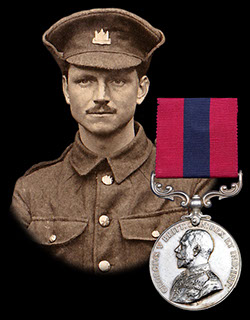
Harry Clarke DCM.
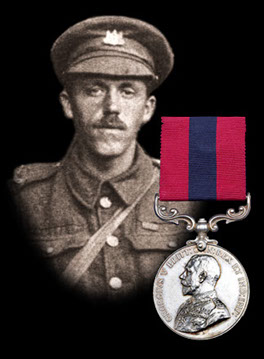
"Pop" Latham DCM.
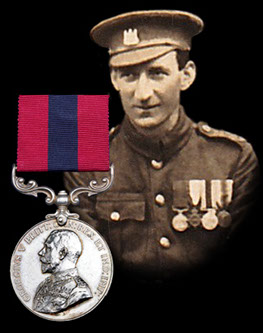
Walter Stubbings DCM.
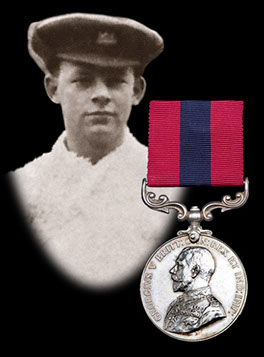
Frank Touch DCM.
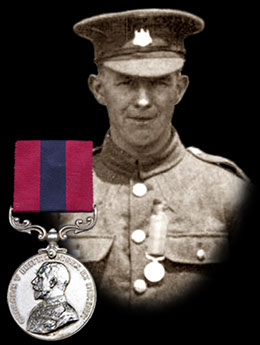
"Jim" Smith DCM.
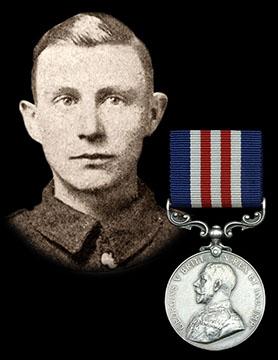
"Ernie" Scarr MM.

This site went live on the 14th February 2015 to mark 100 years since the 1/1st Cambs went off to war.
WE WILL REMEMBER THEM
Email us: cambsregt@gmail.com
Copyright 2015, 2016, 2017, 2018, 2019 by Felix Jackson. The information and images on this site should not be reproduced without prior permission.

